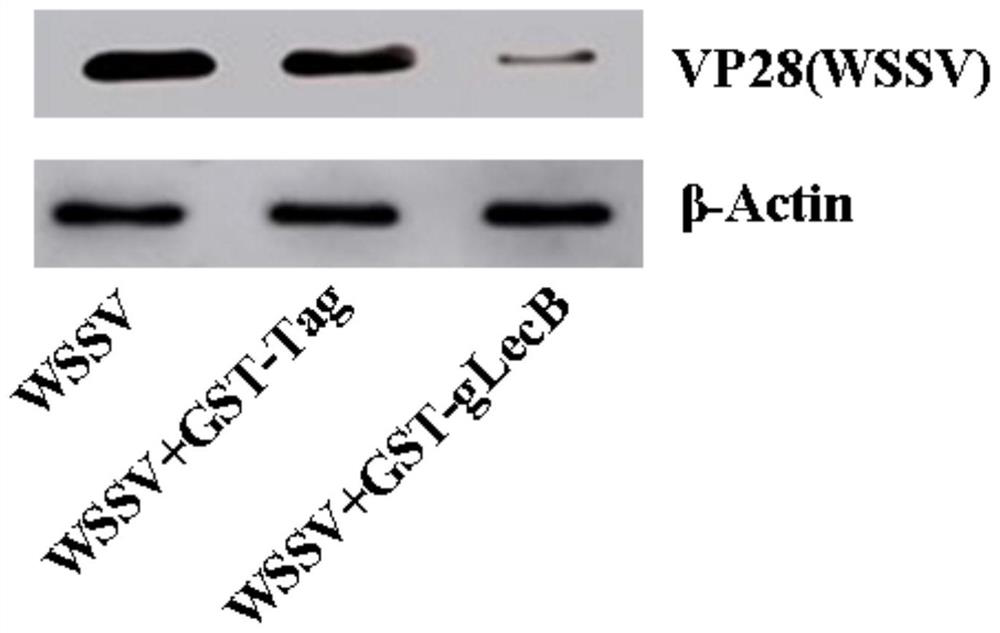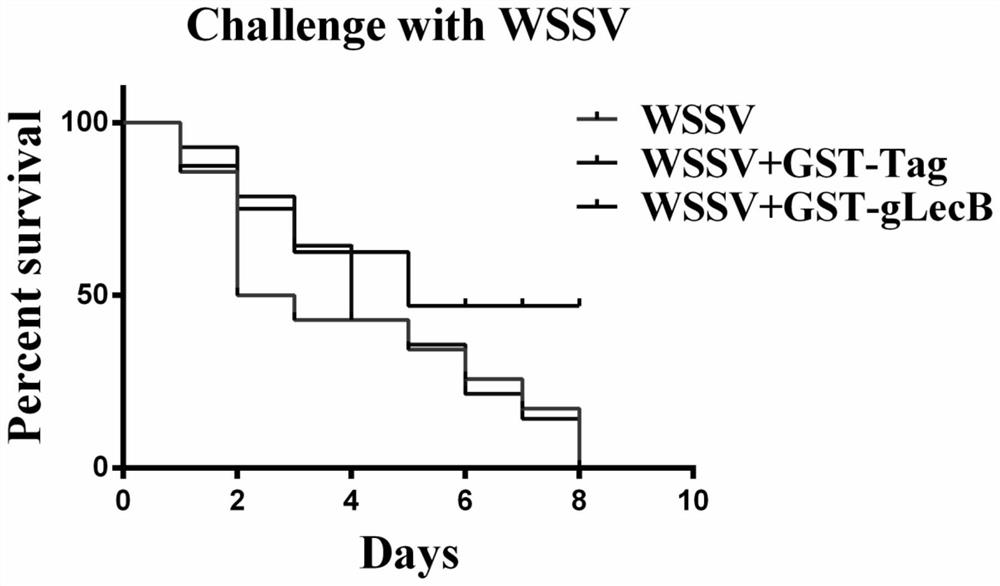A Procambarus clarkii c-type lectin glecb gene and its encoded glecb protein
A technology of Crayfish and gene encoding, applied in the field of genetic engineering, can solve the problems of lack of in-depth analysis of shrimp, lack of cell line support, etc., and achieve the effect of inhibiting the level of replication
- Summary
- Abstract
- Description
- Claims
- Application Information
AI Technical Summary
Problems solved by technology
Method used
Image
Examples
Embodiment
[0081] The method for constructing the expression vector provided in the embodiments of the present invention includes:
[0082] 1. RNA extraction
[0083] Inhale 0.5ml of anticoagulant with a 2ml disposable syringe, after drawing blood, mix immediately, collect into 1.5ml RNA freeEP tube, centrifuge at 3000r, 10min, 4°C, remove supernatant and add 1ml RNAiso Plus to blow evenly; other tissues The sample was ground completely with a grinder, and 1 mL RNAiso Plus was added to the grinder in advance. Then collected into 1.5mL RNA free EP tube, the whole operation on ice. Add 400 μl of chloroform to the collected samples, mix gently, and let stand on ice for 5 minutes. Then centrifuge at 4°C for 10 000r15min, suck 400μl supernatant into a new 1.5ml RNA free EP tube, add 600μl isopropanol, mix gently and place in -20°C refrigerator for 2h to allow RNA to settle; then 10 000r, Centrifuge at 4°C for 10min, discard the supernatant; add 1ml of 75% ethanol, blow and wash the precipi...
PUM
 Login to View More
Login to View More Abstract
Description
Claims
Application Information
 Login to View More
Login to View More - R&D
- Intellectual Property
- Life Sciences
- Materials
- Tech Scout
- Unparalleled Data Quality
- Higher Quality Content
- 60% Fewer Hallucinations
Browse by: Latest US Patents, China's latest patents, Technical Efficacy Thesaurus, Application Domain, Technology Topic, Popular Technical Reports.
© 2025 PatSnap. All rights reserved.Legal|Privacy policy|Modern Slavery Act Transparency Statement|Sitemap|About US| Contact US: help@patsnap.com



